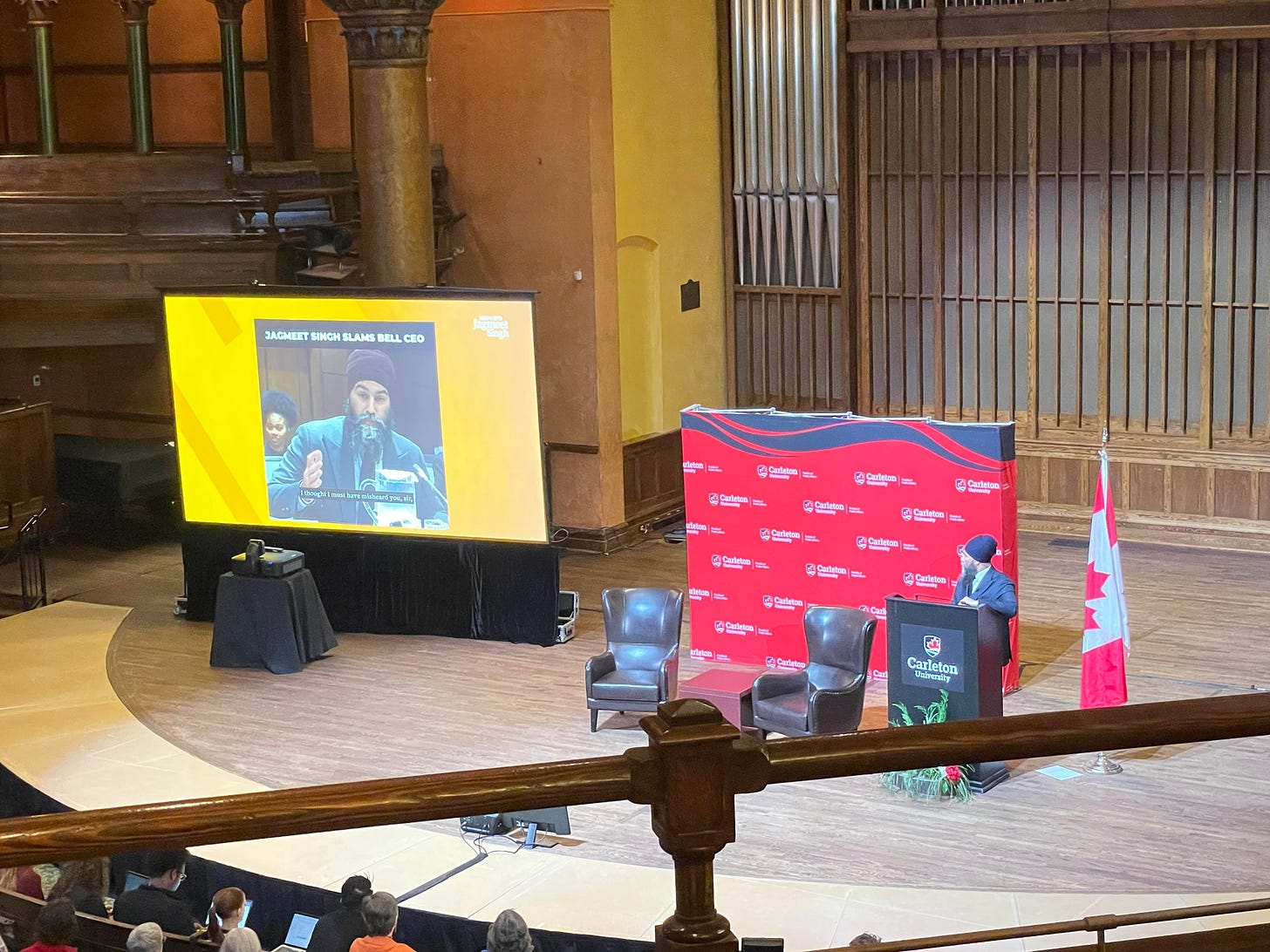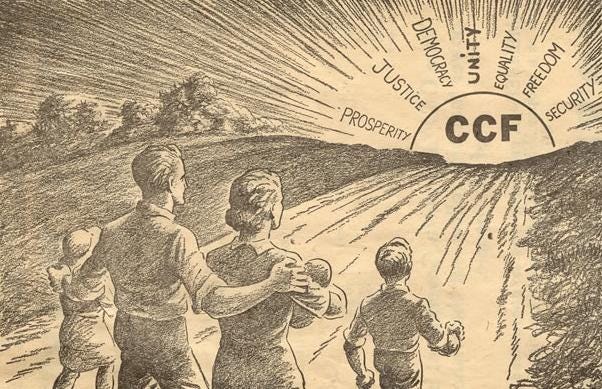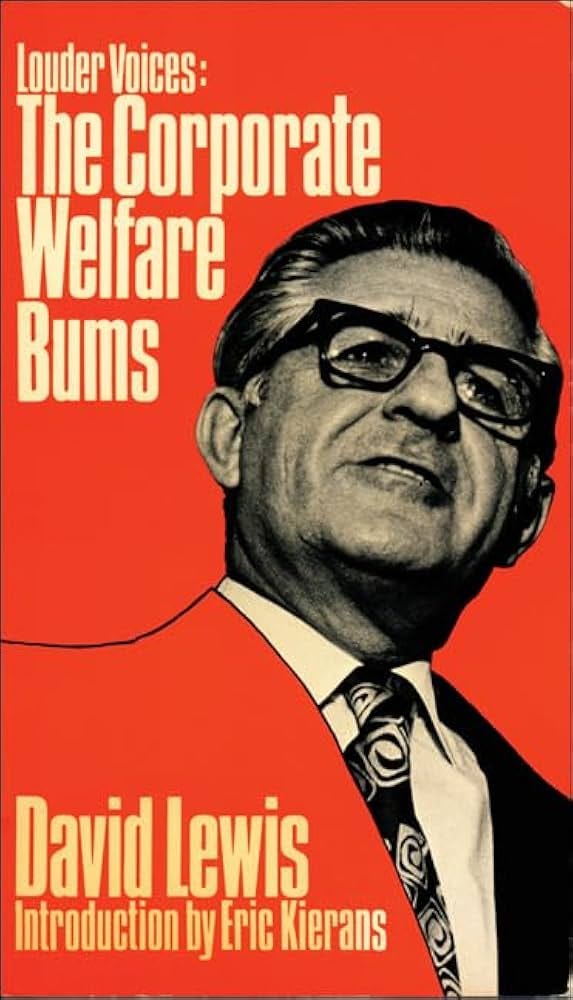No matter your politics, shed a tear for the New Democratic Party of Canada.
It’s the party that can’t catch a break. Vaulted into official opposition in 2011 only to see its leader tragically pass away. A pivot to sensible centrism in the 2015 election and promptly outmaneuvered by the progressive Son of Trudeau. Choosing an exciting and stylish leader in 2017 just when the country was falling out of love with its exciting and stylish prime minister. Propping up the Liberals for three years in an agreement that everyone has forgotten. (Even Pierre Poilievre no longer bothers saying “the Liberal-NDP coalition.) And now the country is trying to get away from the Americans as fast as possible, but the NDP, the OG of anti-American economic nationalism, will be lucky to retain party status.
The NDP could campaign in this 2025 election on a simple slogan: WE TOLD YOU. In 1969 its Waffle faction issued its manifesto. Point #5:
The major threat to Canadian survival today is American control of the Canadian economy. The major issue of our times is not national unity but national survival, and the fundamental threat is external, not internal.
The Waffle was admittedly squelched by the party establishment, but for its extreme leftness, not its anti-Americanism. The Liberals may have led the fight against free trade in 1988, but the NDP covered the other decades, consistently squawking against economic integration with the United States and warning of the risks we face today. And what’s their reward? A projection of seven lousy seats in the current 338canada estimate.
It’s the latest chapter in the perpetual identity crisis of the federal NDP and its CCF predecessor.
The federal party’s problem is simple enough: the continuing existence of the Liberal Party of Canada which, like the bumblebee allegedly, defies the laws of the universe and continually blocks the NDP path to growth. No comparable country has a dominant centre party taking up valuable progressive space. There are four healthy provincial New Democrat parties in Western Canada, two currently in power, and they got that way by squeezing out the Liberals (BC being a complicated story) and establishing a two-party system against a right-wing opponent. In 2011 and again last fall it looked like the same might finally be happening federally. But the NDP’s hard luck continues. Similarly, the Ontario party has now won official opposition status three times, but the Ontario Liberals keep refusing to die.
The larger question though is whether this hard luck is self-inflicted. The federal party constantly cycles through debates of whether to move to the centre or stay socialist strong, and if it is running to form its own government, or to influence another. Jack Layton commonly said he was “running to be prime minister,” even when the party was fourth in the House, and he came closer than any other leader. But the supply-and-confidence agreement of 2022-25 fits its more pragmatic tradition of winning policy concessions in minority governments, almost always from the Liberals, including by Layton in 2005. When the NDP speaks of its accomplishments it inevitably points to those minority moments, even though the Liberals usually seem to end up with the better deal. And at times it seems the party prefers to be up against a majority government, allowing a certain purity to yell from the back corner of the House, rather than sacrificing ideals for a slice of power.
Another question is whether the leader matters. I’ve always found Mr Singh very likable, combining three-piece style with the laid-back cadence of a California surfer, and felt he was a victim of bad timing unable to get ahead of the fading Liberal progressivism. But this is his third election, and he doesn’t have a lot to show for eight years beyond a supply-and-confidence deal that arguably any leader could have extracted from the ready-to-deal Trudeau, and which tied the party to a (then-)sinking Liberal ship. The lack of new ideas and imagination in the party is all too evident under Mr Singh, whose only conversation topics seem to be CEO pay and grocery prices.

Admittedly, no NDP leader ever lost their job demanding more taxes on the rich. But the party has been in a slump for some time, well before the bizarre twists of 2025. In 2019 they slid from 39 to 24 seats, clawed up to 25 in 2021, and have been anemic in the polls ever since. The NDP is tight-knit and doesn’t hang its dirty laundry in public, so it’s difficult to know exactly how tenuous Mr Singh’s leadership is, but it is hard to imagine him continuing after this election.
And the election looks like a blowout. Some may forget that 1993 was also a catastrophe for the NDP as well as Kim Campbell’s Progressive Conservatives, reducing them from 44 to 9 seats. This may well be the same. And while the party can blame the coming of the Orange One for upending everything and once more reviving their nemesis Liberals back from the dead, the problem was there well before tariffs became a household word.
Is it the party’s fault? The leader’s fault? The electoral system? The country for not recognizing the value of social democracy? Perhaps all of the above. Regardless, it must be galling to watch the election dominated by an issue on which the NDP has staked its claim again and again, but now is barely in the conversation.






Singh lost me finally after the “Sad Singh in the shower” TikTok. Maybe I wasn’t the target audience for that piece of video, but Singh has seemed to me way more about style than substance. I voted for Ed, and Jack, too.
I'm always reminded of Allan Fotheringham's description of the NDP as "Communists in a hurry." But seriously I'm sorry Professor Malloy, the NDP is responsible for unreasonably enabling Justin Trudeau far beyond his "best before" date. And Singh is their poster boy. The NDP gets no slack from me for that. I hope they're reduced to a shadow of their former selves and forced to reorganize into something more than just a water-carrier for Liberals incumbents.